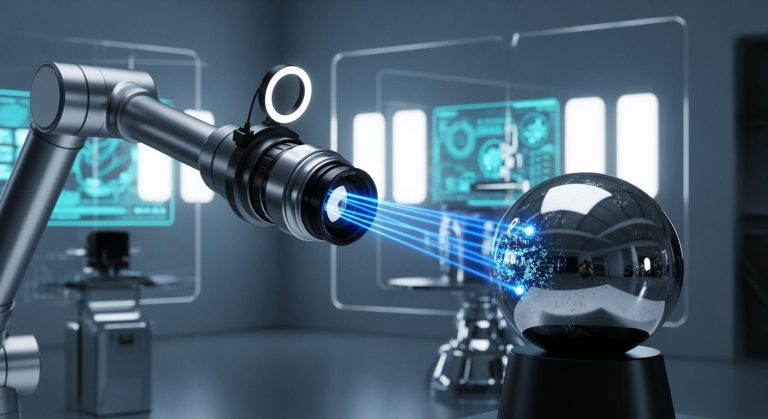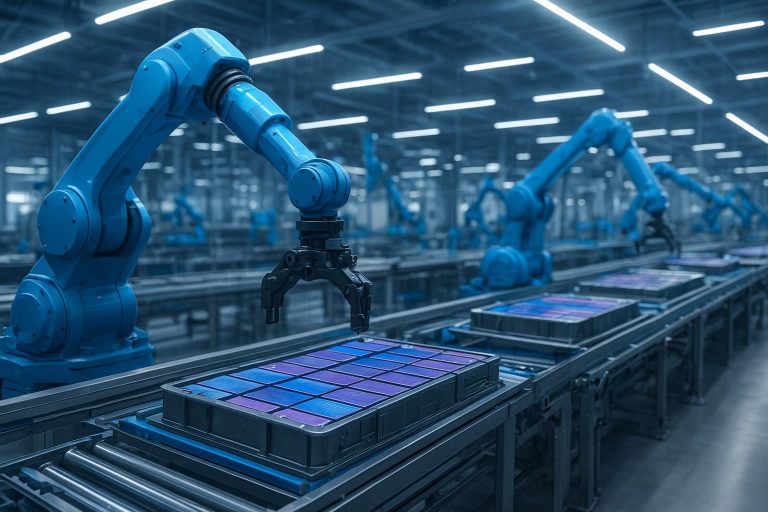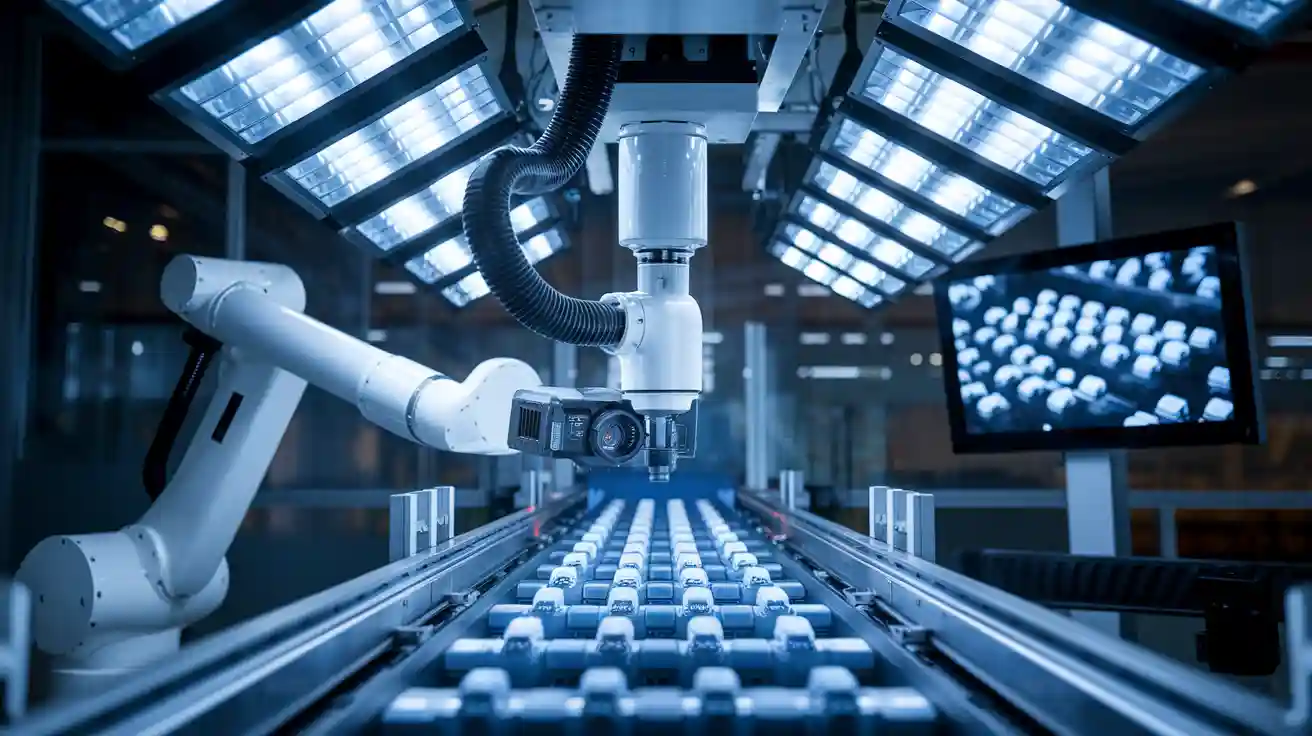
Lighting stands as a critical factor in every machine vision application. Industry reports show that between 35% and 50% of machine vision system failures happen because of poor lighting. The importance of lighting cannot be overstated, especially when a special light machine vision system comes into play. These systems deliver the clarity and contrast needed for high-quality imaging and reliable inspection. For example, when a machine vision system inspects a product in a factory, only a special light machine vision system can reveal fine defects that standard lighting misses. The importance of lighting becomes clear: without the right solution, even advanced cameras cannot deliver trustworthy results. A special light machine vision system ensures the machine vision process remains accurate and consistent.
Key Takeaways
- Special lighting greatly improves machine vision by enhancing image clarity, contrast, and defect detection accuracy.
- Using the right lighting type and technique reduces glare, shadows, and reflections, making inspections more reliable.
- Selecting lighting depends on object material, surface features, camera sensitivity, and the inspection environment.
- Testing and adjusting lighting setups before full implementation ensures better inspection results and fewer errors.
- Proper lighting lowers inspection costs by reducing false positives, speeding up inspections, and cutting labor needs.
Lighting in Machine Vision
Image Quality
Machine vision lighting plays a vital role in capturing clear and detailed images. The quality of lighting directly affects the camera’s ability to reveal fine details, sharp edges, and subtle differences in texture. When the image acquisition system uses proper lighting, it maximizes contrast and reduces noise. This allows the acquisition of images with high clarity and resolution. Poor or inconsistent lighting can cause shadows, glare, or uneven brightness, making it difficult for the machine vision system to identify important features. Over-exposure hides details by saturating pixels, while under-exposure conceals features in darkness. Controlled and uniform lighting, such as LED panels, minimizes flicker and ensures even illumination. This improves the reliability of the acquisition process and supports accurate analysis.
Tip: Uniform lighting helps the image acquisition system avoid bright spots and dark areas, which can complicate image correction and reduce defect detection.
The table below summarizes the primary roles of machine vision lighting:
| Primary Role | Explanation |
|---|---|
| Enhance Contrast | Lighting improves the contrast between target features and background, making features easier to identify. |
| Increase Brightness | Adequate brightness raises the signal-to-noise ratio, improving image quality and reducing ambient interference. |
| Ensure Robustness | Lighting must maintain consistent image quality despite changes in object position or light source angle. |
| Control Reflections | By managing reflections based on surface shape, glossiness, and color, lighting optimizes feature visibility. |
| Provide Predictability | Following reflection laws allows stable and accurate illumination for reliable image analysis. |
| Minimize Shadows/Glare | Proper lighting reduces shadows and glare that can obscure features. |
| Highlight Features | Lighting can be configured to emphasize specific features important for inspection. |
| Optimize Image Quality | Overall lighting setup improves image clarity and reliability for inspection and analysis. |
Accuracy and Reliability
Accurate inspection depends on the consistency and quality of machine vision lighting. Uniform illumination reduces shadows and glare, which are major causes of measurement errors. High-quality LED optics provide even light distribution, allowing the machine vision system to deliver precise and repeatable results. Techniques such as ring lights and dome lights scatter light evenly, making it easier to detect edges and features on reflective or irregular surfaces. Adaptive lighting systems adjust to environmental changes, maintaining optimal conditions for acquisition and analysis.
- Uniform lighting ensures repeatability in inspections.
- Consistent illumination improves defect detection rates and reduces false negatives.
- Stable lighting supports reliable acquisition across different production runs.
Machine vision lighting not only enhances image quality but also ensures the accuracy and reliability of every acquisition. This leads to better performance in automated inspection and quality control tasks.
Benefits of Special Light Machine Vision System
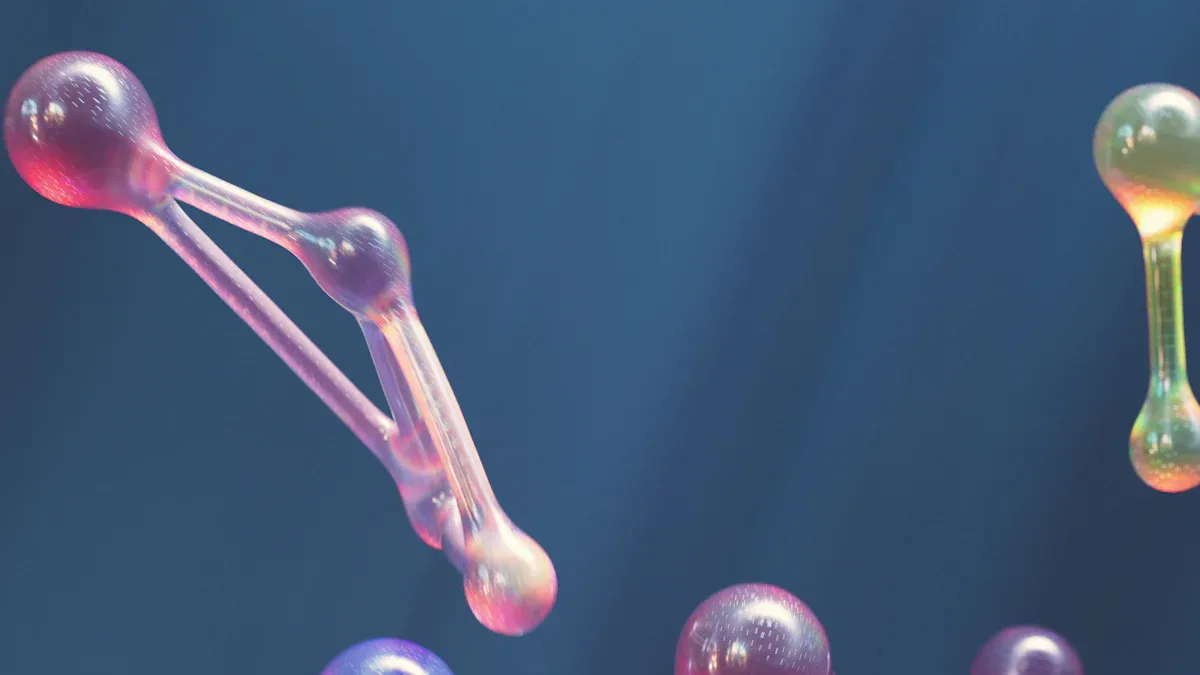
Contrast Enhancement
Contrast enhancement stands as one of the most significant advantages of a special light machine vision system. By selecting the right wavelength and lighting geometry, engineers can make features stand out sharply against their backgrounds. Materials reflect and absorb different wavelengths in unique ways. For example, using green light can suppress red reflections, while blue or ultraviolet light reveals shallow surface features due to increased surface scattering. This approach allows the system to highlight edges, textures, and defects that would otherwise blend into the background.
- Materials reflect and absorb specific wavelengths, enabling selective contrast.
- Opposite colors on the color wheel maximize feature-to-background contrast.
- Near-infrared lighting highlights texture and composition, not just color.
- Shorter wavelengths like blue and UV enhance visibility of fine surface details.
- Optical filters and lighting angles further refine contrast and reduce glare.
Using colored LED lighting tailored to the camera’s sensitivity can make certain features, such as PCB pads or circuit traces, much more visible. For instance, red LEDs highlight pads, while green LEDs emphasize traces, improving inspection reliability.
The table below shows how different lighting techniques affect contrast and feature differentiation in machine vision applications:
| Lighting Technique | Effect on Contrast and Feature Differentiation | Application Example |
|---|---|---|
| Bright Field Lighting | Enhances color fidelity and texture by eliminating shadows | Textile inspection for weave patterns |
| Dark Field Lighting | Emphasizes edges and surface irregularities by capturing scattered light | Detecting scratches in glass or plastic |
| Backlighting | Highlights silhouettes, edges, and holes by illuminating from behind | Inspection of holes or transparent features |
| Calibration (PRNU) | Ensures uniform brightness and reduces pixel sensitivity variation | Regular calibration for imaging precision |
Optimized lighting can improve defect detection rates by up to 30%, making automated inspection more accurate and reliable. High-contrast images also boost the performance of AI models used in machine vision.
Glare Reduction
Glare often poses a challenge in machine vision, especially when inspecting reflective or shiny materials. A special light machine vision system uses advanced strategies to minimize glare and ensure clear imaging. Diffuse lighting, such as dome or on-axis illumination, provides even, multidirectional light that reduces confusing reflections on curved or glossy surfaces. Polarizing filters can eliminate glare from reflected light, although they may reduce overall light intensity.
Adjusting the angles of both the light source and the camera can also help. By moving the light off-axis at a high angle, the system can completely eliminate glare, especially on flat surfaces. This geometric approach requires careful setup but delivers excellent results.
| Lighting Strategy | Description | Effectiveness for Reducing Glare on Reflective/Shiny Surfaces | Trade-offs/Notes |
|---|---|---|---|
| Adjusting Light and Camera Angles | Changes positions to minimize specular reflections | Highly effective; can eliminate glare | Requires flexible setup; geometry is critical |
| Polarizing Filters | Blocks specular reflections with paired polarizers | Moderately effective; reduces glare, not always on curved surfaces | Reduces light intensity; some residual glare may remain |
| Diffuse Lighting (Dome/On-axis) | Provides even, multidirectional illumination | Highly effective for curved and flat surfaces | Needs close proximity; reduces hotspots, improves feature visibility |
| Dark Field Lighting | Highlights edges and texture, background appears dark | Useful for surface features, less for glare elimination | Best for texture and contour detection |
Note: In electronics manufacturing, using diffuse dome lighting and polarizing filters reduced glare and improved defect detection accuracy to 99.7%. This led to a 94% reduction in defects escaping to customers and an 85% drop in quality complaints.
Feature Detection
Detecting subtle or low-contrast features requires specialized lighting techniques. Off-axis and coaxial lighting geometries help control reflections and enhance surface details. Backlighting creates strong silhouettes, making it easier to spot holes or embedded particles. Diffuse lighting minimizes harsh reflections, while dark-field lighting projects light at a shallow angle to make minor scratches and textures stand out.
- Diffuse lighting enhances defect visibility on shiny surfaces.
- Coaxial lighting evenly illuminates surfaces, aiding detection of surface irregularities.
- Dark-field lighting highlights minor scratches and textures.
- Backlighting reveals punctures or embedded particles by transmitted light.
- Polarized lighting improves contrast on shiny or transparent materials.
Specialized lighting combined with photometry-based imaging systems enables the detection of features that standard setups might miss. Imaging photometers capture fine details such as hairline scratches or subtle surface variations. These systems weigh light intensity as perceived by the human eye, improving the visibility of defects that are often missed by both humans and standard cameras.
Real-world use cases demonstrate the impact of these techniques:
- In brick production, custom lighting setups increased defect detection accuracy to 98.7%, reduced warranty claims by 76%, and saved $2.4 million annually.
- In aluminum extrusion, specialized lighting enhanced defect contrast, enabling AI-based systems to outperform human inspectors and prevent faulty products from shipping.
- In gypsum board production, machine vision systems using special lighting achieved inspection speeds up to 700 feet per minute, providing 100% surface coverage and detecting defects as small as ¼ inch.
| Improvement Aspect | Measurable Improvement |
|---|---|
| Inspection error reduction | More than 90% decrease compared to manual inspection |
| Defect rate reduction | Up to 80% fewer defects detected |
| Inspection cycle time | Up to 20% faster inspection cycles |
| Throughput | Thousands of components inspected per hour |
| Defect detection accuracy | Above 99% accuracy in defect and object identification |
| Inspection time reduction | 50% less time required for inspections |
| Labor cost reduction | Approximately 50% decrease in quality assurance labor |
| Productivity improvement | Around 40% boost compared to manual methods |
Special light machine vision system solutions deliver measurable improvements in inspection speed, accuracy, and cost savings. These benefits make them essential for modern machine vision applications in factory automation and quality control.
Types of Machine Vision Lighting
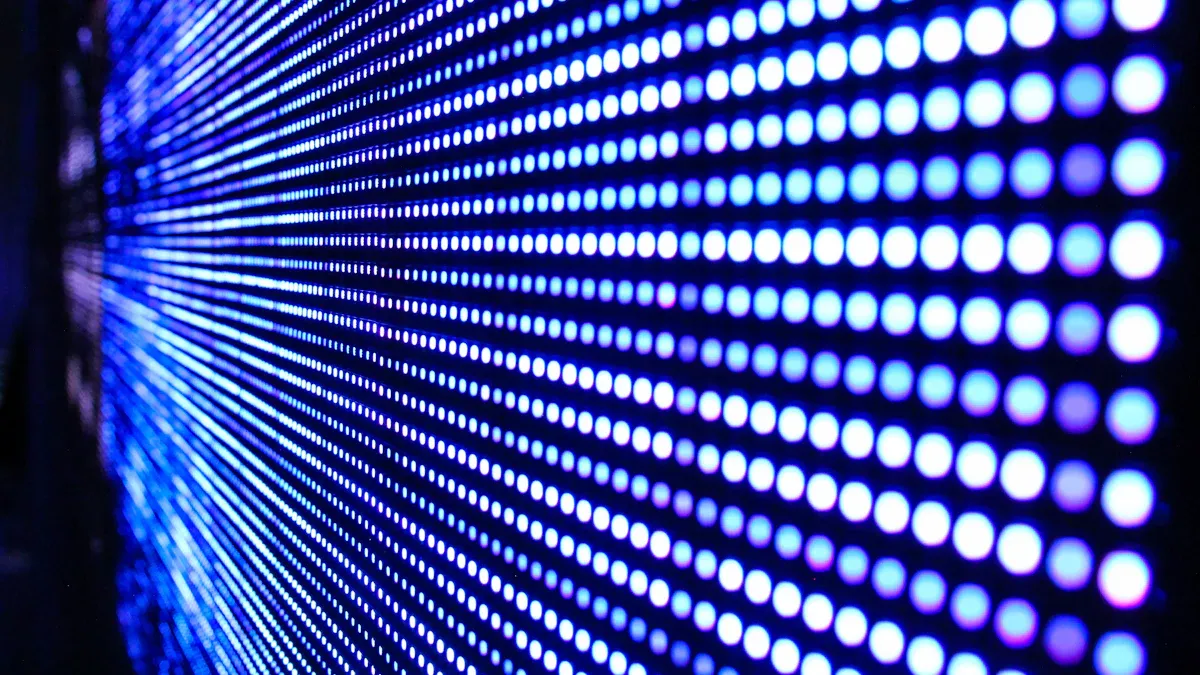
LED and Fluorescent
LED lighting dominates modern machine vision lighting due to its energy efficiency, long lifespan, and stable output. LEDs convert almost 90% of energy into light, providing focused, instant-on illumination. This makes them ideal for high-speed inspections, barcode reading, and color-critical tasks. LEDs also offer a wide range of colors, including white, red, and green, which help enhance contrast and reduce glare for different materials.
Fluorescent lighting, once common in machine vision lighting, now sees less use. It provides broad, even illumination but has a shorter lifespan and can flicker over time. Fluorescent lights may still appear in older systems or where initial cost is a concern, but LEDs have largely replaced them due to lower maintenance and better color rendering.
Tip: For applications needing consistent, high-quality illumination, LEDs outperform fluorescent lights in both reliability and total cost of ownership.
Quartz-Halogen and Xenon
Quartz-halogen lighting delivers intense, continuous light. It suits detailed inspections where small surface defects must be visible. However, it generates significant heat, which can affect sensitive environments. Xenon lighting excels in high-speed inspections that require strobe effects to freeze motion. Its bright, pulsed output helps capture clear images of fast-moving products. Xenon lights, however, consume more energy and are not suitable for continuous illumination.
| Lighting Type | Typical Use Cases | Key Advantages | Limitations |
|---|---|---|---|
| Quartz-Halogen | Surface defect detection | High intensity, continuous light | Generates heat |
| Xenon | High-speed, strobe inspections | Bright, pulsed light | High energy use, not for continuous |
Metal Halide
Metal halide lighting provides very bright output and emits special wavelengths. It works well for unique inspection tasks that need high-intensity light. However, its setup is complex, and it is less common in machine vision lighting today. Metal halide is not ideal for very high-speed tasks, where alternatives like xenon or LED lighting perform better.
Lighting Techniques
Machine vision lighting uses several illumination techniques to solve inspection challenges:
- Dome lights create uniform, shadowless illumination, perfect for shiny or curved surfaces.
- Coaxial lights provide on-axis lighting, reducing glare on flat, reflective objects.
- Ring lights enhance contrast by casting directional light, useful for detecting surface defects.
- Bar lights deliver directional illumination along edges or lines, highlighting textures.
- Pattern projectors project structured light for 3D shape analysis and surface profiling.
Combining diffuse and directional illumination techniques often yields the best results. The choice depends on the object’s material and the type of defect being inspected. Machine vision lighting systems rely on these techniques to achieve reliable, high-quality imaging in diverse industrial environments.
Choosing Lighting for Machine Vision Applications
Key Factors
Selecting the right lighting for machine vision requires careful consideration of several important factors. Each object and environment presents unique challenges. The following points guide engineers and integrators in making effective choices:
- Object Material and Surface Finish: Shiny, reflective surfaces benefit from red or infrared light, which reduces glare and enhances contrast. Dark-colored or small-featured objects often require blue light to improve detail visibility. For transparent or translucent materials, backlighting creates clear silhouettes.
- Surface Defects and Features: Scratches, dents, and fine cracks become more visible under specific colors. Blue light highlights fine defects, while red light works well for reflective materials. UV light detects fluorescent markings and invisible contamination.
- Camera Sensor Sensitivity: The camera’s sensitivity to certain wavelengths influences lighting choice. Infrared-sensitive cameras pair best with IR lighting, while color cameras may use white or RGB lighting.
- Inspection Environment: High ambient light can introduce noise and reduce image quality. Using brighter dedicated lights, optical filters, or enclosures helps suppress unwanted light. Dust, temperature, and humidity also affect lighting performance, so protective enclosures and ruggedized lights are often necessary.
- Physical Constraints: Space limitations may restrict lighting placement. For example, backlighting needs room behind the object, while ring lights can mount directly on the camera.
- Lighting Geometry and Pattern: The spatial relationship between the sample, light, and camera, as well as the shape of the projected light, determines how features appear in the image. Bright-field lighting works for most surfaces, but dark-field lighting highlights surface defects by indirect illumination.
- Industry Requirements: Different industries have unique needs. Pharmaceuticals demand precise lighting for packaging inspection, while logistics focuses on lighting that improves barcode reading and package inspection speed.
Tip: Combining different light colors, such as red and blue, can enhance contrast and detail for complex objects. Always match the light source’s spectral output with the camera’s sensitivity for optimal results.
Selection Steps
A structured approach ensures the best lighting solution for any machine vision application. The following steps help guide the process:
- Define Inspection Goals
Identify the features or defects to detect. Build an image database using sample parts to prototype and evaluate the application with basic equipment. - Analyze Object Properties
Examine the object’s material, color, shape, and surface finish. Determine which lighting color and geometry will maximize contrast and minimize reflections. - Assess the Inspection Environment
Evaluate ambient light sources, temperature, dust, and humidity. Use enclosures, filters, or high-power strobing to control environmental effects. - Select Lighting Type and Technique
Choose the appropriate lighting type (LED, fluorescent, quartz-halogen, etc.) and technique (ring, bar, dome, backlight, or pattern projector) based on object and environment analysis. - Prototype and Test
Set up the lighting and capture test images. Use image analysis software to evaluate contrast, glare, and feature visibility. Adjust lighting angles, intensity, and color as needed. - Optimize for Integration
Ensure the lighting fits within physical constraints and integrates with other automation technologies. Multifunctional lighting units can provide flexibility for changing inspection tasks. - Consult with Vendors and Stakeholders
Collaborate with lighting manufacturers and involve maintenance, quality control, and end users early in the process. Their input helps avoid costly redesigns and ensures smooth integration. - Plan for Maintenance and Calibration
Establish regular maintenance and calibration routines to keep lighting and image analysis software performing at peak levels.
Note: Avoid common mistakes such as testing only with ideal samples, neglecting environmental constraints, or copying lighting solutions from previous projects without adaptation. Each machine vision system has unique requirements.
Application Examples
Real-world examples show how proper lighting selection improves machine vision performance:
- Automotive Part Inspection
A high-speed inspection system used adaptive lighting synchronized with cameras at 1200 frames per second. This setup improved inspection precision and defect detection, supporting reliable image analysis software and reducing false rejects. - Surface Defect Detection in Metalwork
Dome lighting controlled reflections and shadows on glossy or contoured surfaces. This technique enhanced the detection of surface defects, allowing image processing algorithms to identify flaws with over 95% accuracy. - Barcode Reading in Logistics
High-powered bar lights illuminated packages in scan tunnels, enabling fast and accurate barcode reading. The lighting optimization reduced downtime and improved throughput. - Pharmaceutical Packaging Inspection
Backlighting created high-contrast silhouettes for precise gaging and measurement. This approach increased measurement accuracy and ensured compliance with strict industry standards. - Deep Learning-Based Inspection
In a study of anodized part inspection, optimized lighting improved defect detection accuracy from 82.86% to 95.71%. The improved lighting provided better training data for image analysis software, reducing false positives and supporting robust machine vision applications.
| Application Area | Lighting Technique | Benefit Achieved |
|---|---|---|
| Automotive Inspection | Adaptive, synchronized | Improved precision and defect detection |
| Metal Surface Inspection | Dome lighting | Enhanced surface defect visibility |
| Logistics | Bar/linear lighting | Faster, more accurate barcode reading |
| Pharmaceuticals | Backlighting | Increased measurement accuracy |
| Deep Learning Systems | Optimized color lighting | Higher defect detection accuracy |
Consistent, controlled lighting reduces false rejects and maintenance costs. Newer lighting systems require less upkeep, allowing personnel to focus on higher-value tasks. Enhanced data collection from well-lit inspections supports process improvements and reduces operational costs.
Lighting choices directly influence the integration of machine vision with automation technologies. Multifunctional lighting units and advanced control techniques, such as strobing and multispectral lighting, enable seamless integration with robotic arms and high-speed production lines. Proper lighting also ensures that image analysis software and image processing algorithms deliver reliable results, even in challenging environments.
Special lighting directly boosts machine vision system performance by increasing defect detection rates and reducing false positives. JIDOKA’s solutions, for example, show a 33% rise in inspection throughput and up to 40% fewer false positives. Users should analyze the inspection environment, manage ambient light, and test lighting types before implementation. As machine vision evolves, tailored lighting and advanced sensors will drive even greater accuracy and efficiency.
| Metric | Typical Range | Lighting Impact |
|---|---|---|
| Defect Detection Rate | 99.5% – 99.9% | Consistent, diffuse lighting critical |
| False Positive Rate | 0.5% – 2.0% | Minimized by optimized lighting |
For best results, prioritize lighting early in system design and adapt solutions to each application’s needs.
FAQ
What is special lighting in machine vision?
Special lighting refers to customized light sources and techniques designed to improve image quality. These solutions help cameras capture clear, high-contrast images for accurate inspection and analysis.
Why does lighting choice matter in machine vision systems?
Lighting choice affects image clarity, contrast, and defect visibility. Proper lighting helps the system detect small flaws and reduces errors. Poor lighting can cause missed defects or false positives.
How does glare reduction improve inspection accuracy?
Glare reduction removes unwanted reflections from shiny surfaces. This process allows the camera to see true features and defects. Consistent glare control leads to more reliable inspection results.
Which industries benefit most from special lighting?
Industries such as electronics, automotive, pharmaceuticals, and packaging use special lighting. These sectors require precise inspections and high-quality imaging for quality control and automation.
Can special lighting reduce inspection costs?
Yes. Special lighting increases defect detection rates and reduces false rejects. This improvement lowers labor costs and minimizes waste, leading to significant savings for manufacturers.
See Also
Why Proper Lighting Is Essential For Machine Vision Technology
The Role Of Structured Light In Improving Vision Systems
A Comprehensive Overview Of Electronics In Vision Systems
